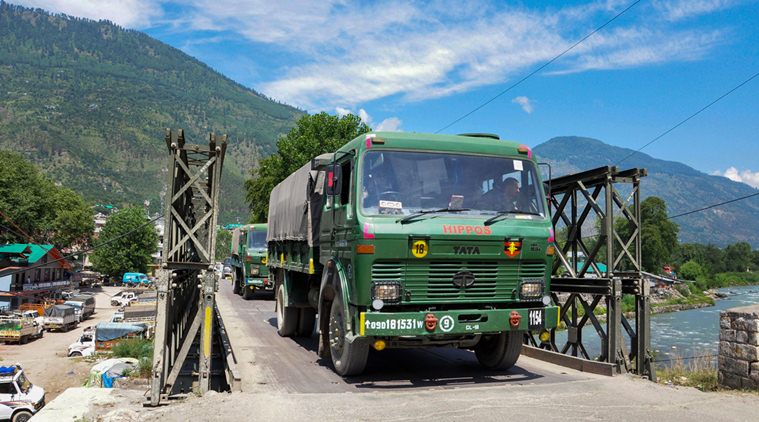Dr D K Giri
The disengagement in Ladakh has begun. China is stepping back from three contentious areas; Galwan, Hot Springs and Gogra. Everyone at home and abroad is cautioning New Delhi to carefully monitor the withdrawal; never to take the Chinese on their word, which they often go back on. Frankly, it is not yet clear where the Chinese had come to on the Indian side of LAC, and how far they are withdrawing.
Critics argue that New Delhi lost ground in Galwan negotiations. On Chinese aggression in East Ladakh, Modi does a Nehru. New Delhi has given in too soon in pursuit of a quick de-escalation. Modi will be mentioned by historians as the first Prime Minister to lose to the Chinese without a fight.
Evidently, according to hardliners, China encroached Despangy-junction and Galwan’s pp-14. By agreeing to a buffer zone on the Indian side of LAC, and to Indian patrolling to the west of the confluence of Galwan and Shyok rivers, India will practically stay out of Galwan valley. This confirms the new claim Beijing makes on the entire valley. The pro-government media began chest-thumping on the withdrawal. They bloviate that New Delhi pushed the Chinese back beyond Indian territory without firing a bullet. It is the biggest victory led by the Prime Minister from the front. His saber-rattling speech to our soldiers at Nimbu, Ladakh not only echoed in Beijing but empowered smaller countries like Bhutan and Myanmar to stare back at the dictator Xi Jinping.
Fact is, Ladakh is the tip of the iceberg of China’s insidious hegemonic designs. It is claiming territory from almost all of its neighbours, having illegally annexed countries like Tibet and Xinxiang. It occupies about 53,000 sqkm of Indian territory. Our aim should be to retrieve our land, liberate Tibet, and recreate the buffer (Tibet) between India and China. Only then, we should celebrate.
I know it is a tall order, but not an impossible task. It may sound absurd too and it did to some panelists. Recall what the wisest man of the world had said; “Only those who attempt the absurd can achieve the impossible.” In any case, the Chinese empire would fall like the Soviet one did. Whether India works towards the disintegration of Chinese empire or not, it is inevitable. But it is in India’s interest that New Delhi aids the process of China’s break-up. Modi has experienced, if not committed, a mistake twice, Doklam and Ladakh, in his six-year tenure at the helm. If he continues with China as business-as-usual, the tragedy is waiting to happen. Look at the most recent experience under Modi. After Doklam standoff, he hit top gear in making up with China. His informal summits in Wuhan and Mahabalipuram, deepening business ties, heavy imports from China, making our economy China-dependent, were all examples of short-sighted approach. Modi’s foreign policy suffers from two perceptional flaws. One, Pakistan is Indian’s enemy number one. Fighting Pakistan on terrorism and saving Kashmir has been the raison d’être of our foreign policy. Instead, it should have been China.
The second flaw is Modi’s assertion of India’s strategic autonomy and the Indian PM being one of the world leaders. This is a hang-over of Nehruvian aspirations. One can be reckoned as a world leader when the country(s) he leads is economically strong, politically credible and socially stable. India can boast of democracy and pluralism, but not of the economy.
Nehru followed a nebulous non-aligned policy which collapsed when we signed the Peace and Security Treaty with Soviets in 1971. He trusted the Chinese and depended on the Soviets. Modi did no different. When the bulk of our trade is with Americans, and we share democratic polities with Europe, Australia, USA, South Korea, Japan and Israel who promise to stand by us in defence of our democracy, we walk into both Soviet and Chinese entrapment. Another imprudent strategy is to massively buy weapons from Soviets which they sell to Chinese as well. Why is this contradiction or compulsion?
Honestly, New Delhi should pitch its tent high; make necessary formal strategic alliances to take on China to a logical and satisfactory end, which is the retrieval of our land including Aksai Chin and Shaksgam. These recurrent skirmishes on LAC and Chinese’s atrocious claim on Arunachal Pradesh would cease only when Jinping’s China is made to bite dust like Hitler was. India cannot do it alone, however much weaponry it accumulates.
-INFA. The writer is Prof. International Polities, JMI.
